Welcome to What Is Affiliate Marketing About Today? – Best Training Of Affiliate Marketing? (part:2). In What Is Affiliate Marketing About Today? – Best Training Of Affiliate Marketing? (part:1) we learned about, and touched bases on: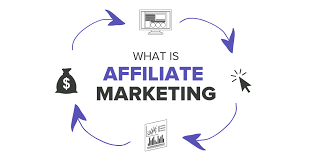
- Wealthy Affiliates Reviews – Basic Structure Corporation
- Your Passion Is Your Purpose – Is Wealthy Affiliate A Training Program?
- An Online Community Of Caring Experts – The Support System Within Wealthy Affiliate
- The Finale – Another Review About Wealthy Affiliate
This post contains affiliate links, which mean if you use these links to purchase an item or service I receive a commission at no extra cost to you. Visit my Affiliate Disclaimer page here.
In What Is Affiliate Marketing About Today? – Best Training Of Affiliate Marketing? (part:2) we will learn about, and touched bases on: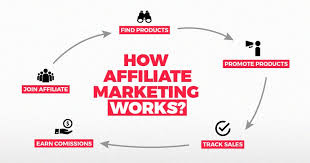
♦ Affiliate Compensation Marketing methods
- Revenue sharing or pay per sale
- Decreased Payment Systems
- Associate Production
♦ Multi-tier Plan of Action
♦ What Advertisers See
- Superiority for merchants
- Performance options
- Affiliate organization and program organization externalization
- Categories of affiliate websites
- Publisher Engagement
Affiliate Compensation Marketing methods
Revenue sharing or pay per sale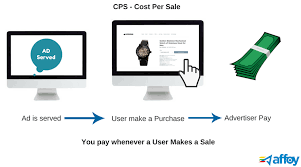
Eighty percent of affiliate programs today use revenue sharing or pay per sale (PPS) as a compensation method, nineteen percent use cost per action (CPA), and the remaining programs use other methods such as cost per click (CPC) or cost per mille (CPM, cost per estimated 1000 views).
Decreased Payment Systems
 Within more mature markets, less than one percent of traditional affiliate marketing programs today use cost per click and cost per mille. However, these compensation methods are used heavily in display advertising and paid search.
Within more mature markets, less than one percent of traditional affiliate marketing programs today use cost per click and cost per mille. However, these compensation methods are used heavily in display advertising and paid search.
 Cost per mille requires only that the publisher make the advertising available on his or her website and display it to the page visitors in order to receive a commission. Pay per click requires one additional step in the conversion process to generate revenue for the publisher: A visitor must not only be made aware of the advertisement but must also click on the advertisement to visit the advertiser’s website.
Cost per mille requires only that the publisher make the advertising available on his or her website and display it to the page visitors in order to receive a commission. Pay per click requires one additional step in the conversion process to generate revenue for the publisher: A visitor must not only be made aware of the advertisement but must also click on the advertisement to visit the advertiser’s website.
 Cost per click was more common in the early days of affiliate marketing but has diminished in use over time due to click fraud issues very similar to the click fraud issues modern search engines are facing today. Contextual advertising programs are not considered in the statistic pertaining to the diminished use of cost per click, as it is uncertain if contextual advertising can be considered affiliate marketing.
Cost per click was more common in the early days of affiliate marketing but has diminished in use over time due to click fraud issues very similar to the click fraud issues modern search engines are facing today. Contextual advertising programs are not considered in the statistic pertaining to the diminished use of cost per click, as it is uncertain if contextual advertising can be considered affiliate marketing.
While these models have diminished in mature e-commerce and online advertising markets they are still prevalent in some more nascent industries. China is one example where Affiliate Marketing does not overtly resemble the same model in the West. With many affiliates being paid a flat “Cost Per Day” with some networks offering Cost Per Click or CPM.
Associate Production
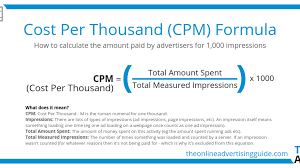 In the case of cost per mille/click, the publisher is not concerned about whether a visitor is a member of the audience that the advertiser tries to attract and is able to convert because at this point the publisher has already earned his commission. This leaves the greater, and, in case of cost per mille, the full risk and loss (if the visitor cannot be converted) to the advertiser.
In the case of cost per mille/click, the publisher is not concerned about whether a visitor is a member of the audience that the advertiser tries to attract and is able to convert because at this point the publisher has already earned his commission. This leaves the greater, and, in case of cost per mille, the full risk and loss (if the visitor cannot be converted) to the advertiser.
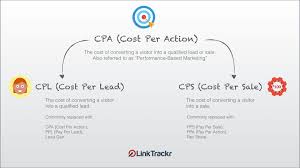 Cost per action/sale methods require that referred visitors do more than visit the advertiser’s website before the affiliate receives a commission. The advertiser must convert that visitor first. It is in the best interest of the affiliate to send the most closely targeted traffic to the advertiser as possible to increase the chance of a conversion. The risk and loss are shared between the affiliate and the advertiser.
Cost per action/sale methods require that referred visitors do more than visit the advertiser’s website before the affiliate receives a commission. The advertiser must convert that visitor first. It is in the best interest of the affiliate to send the most closely targeted traffic to the advertiser as possible to increase the chance of a conversion. The risk and loss are shared between the affiliate and the advertiser.
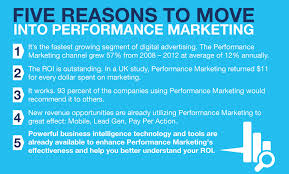 Affiliate marketing is also called “performance marketing”, in reference to how sales employees are typically being compensated. Such employees are typically paid a commission for each sale they close, and sometimes are paid performance incentives for exceeding objectives. Affiliates are not employed by the advertiser whose products or services they promote, but the compensation models applied to affiliate marketing are very similar to the ones used for people in the advertisers’ internal sales department.
Affiliate marketing is also called “performance marketing”, in reference to how sales employees are typically being compensated. Such employees are typically paid a commission for each sale they close, and sometimes are paid performance incentives for exceeding objectives. Affiliates are not employed by the advertiser whose products or services they promote, but the compensation models applied to affiliate marketing are very similar to the ones used for people in the advertisers’ internal sales department.
 The phrase, “Affiliates are an extended sales force for your business”, which is often used to explain affiliate marketing, is not completely accurate. The primary difference between the two is that affiliate marketers provide little if any influence on a possible prospect in the conversion process once that prospect is directed to the advertiser’s website. The sales team of the advertiser, however, does have the control and influence up to the point where the prospect either a) signs the contract, or b) completes the purchase.
The phrase, “Affiliates are an extended sales force for your business”, which is often used to explain affiliate marketing, is not completely accurate. The primary difference between the two is that affiliate marketers provide little if any influence on a possible prospect in the conversion process once that prospect is directed to the advertiser’s website. The sales team of the advertiser, however, does have the control and influence up to the point where the prospect either a) signs the contract, or b) completes the purchase.
Multi-tier Plan of Action
 Some advertisers offer multi-tier programs that distribute commission into a hierarchical referral network of sign-ups and sub-partners. In practical terms, publisher “A” signs up to the program with an advertiser and gets rewarded for the agreed activity conducted by a referred visitor. If publisher “A” attracts publishers “B” and “C” to sign up for the same program using his sign-up code, all future activities performed by publishers “B” and “C” will result in additional commission (at a lower rate) for publisher “A”.
Some advertisers offer multi-tier programs that distribute commission into a hierarchical referral network of sign-ups and sub-partners. In practical terms, publisher “A” signs up to the program with an advertiser and gets rewarded for the agreed activity conducted by a referred visitor. If publisher “A” attracts publishers “B” and “C” to sign up for the same program using his sign-up code, all future activities performed by publishers “B” and “C” will result in additional commission (at a lower rate) for publisher “A”.
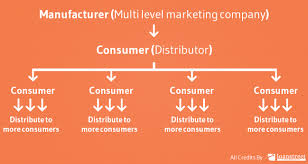 Two-tier programs exist in the minority of affiliate programs; most are simply one-tier. Referral programs beyond two-tier resemble multi-level marketing (MLM) or network marketing but are different: Multi-level marketing (MLM) or network marketing associations tend to have more complex commission requirements/qualifications than standard affiliate programs.
Two-tier programs exist in the minority of affiliate programs; most are simply one-tier. Referral programs beyond two-tier resemble multi-level marketing (MLM) or network marketing but are different: Multi-level marketing (MLM) or network marketing associations tend to have more complex commission requirements/qualifications than standard affiliate programs.
What Advertisers See
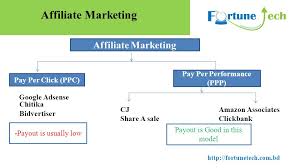 Superiority for merchants
Superiority for merchants
Merchants favor affiliate marketing because in most cases it uses a “pay for performance” model, meaning that the merchant does not incur a marketing expense unless results are accrued (excluding any initial setup cost).
Performance options
 Some merchants run their own (in-house) affiliate programs using dedicated software, while others use third-party intermediaries to track traffic or sales that are referred from affiliates. There are two different types of affiliate management methods used by merchants: standalone software or hosted services, typically called affiliate networks. Payouts to affiliates or publishers can be made by the networks on behalf of the merchant, by the network, consolidated across all merchants where the publisher has a relationship with and earned commissions or directly by the merchant itself.
Some merchants run their own (in-house) affiliate programs using dedicated software, while others use third-party intermediaries to track traffic or sales that are referred from affiliates. There are two different types of affiliate management methods used by merchants: standalone software or hosted services, typically called affiliate networks. Payouts to affiliates or publishers can be made by the networks on behalf of the merchant, by the network, consolidated across all merchants where the publisher has a relationship with and earned commissions or directly by the merchant itself.
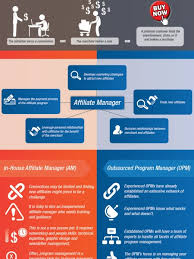 Affiliate organization and program organization externalization
Affiliate organization and program organization externalization
Uncontrolled affiliate programs aid rogue affiliates, who use spamming, trademark infringement, false advertising, cookie stuffing, typo squatting, and other unethical methods that have given affiliate marketing a negative reputation.
Some merchants are using outsourced (affiliate) program management (OPM) companies, which are themselves often run by affiliate managers and network program managers. OPM companies perform affiliate program management for the merchants as a service, similar to the role an advertising agencies serves in offline marketing.
Categories of affiliate websites
Affiliate websites are often categorized by merchants (advertisers) and affiliate networks. There are currently no industry-wide standards for the categorization. The following types of websites are generic, yet are commonly understood and used by affiliate marketers.
- Search affiliates that utilize pay per click search engines to promote the advertisers’ offers (i.e., search arbitrage)
- Price comparison service websites and directories
- Loyalty websites, typically characterized by providing a reward or incentive system for purchases via points, miles, cash back
- Cause Related Marketing sites that offer charitable donations
- Coupon and rebate websites that focus on sales promotions
- Content and niche market websites, including product review sites
- Personal websites
- Weblogs and websites syndication feeds
- E-mail marketing list affiliates (i.e., owners of large opt-in -mail lists that typically employ e-mail drip marketing) and newsletter list affiliates, which are typically more content-heavy
- Registration path or co-registration affiliates who include offers from other merchants during the registration process on their own website
- Shopping directories that list merchants by categories without providing coupons, price comparisons, or other features based on information that changes frequently, thus requiring continual updates
- Cost per action networks (i.e., top-tier affiliates) that expose offers from the advertiser with which they are affiliated with their own network of affiliates
- Websites using adbars (e.g. AdSense) to display context-sensitive advertising for products on the site
- Virtual currency that offers advertising views in exchange for a handout of virtual currency in a game or other virtual platform.
- File-Sharing: Web sites that host directories of music, movies, games and other software. Users upload content to file-hosting sites and then post descriptions of the material and their download links on directory sites. Uploaders are paid by the file-hosting sites based on the number of times their files are downloaded. The file-hosting sites sell premium download access to the files to the general public. The websites that host the directory services sell advertising and do not host the files themselves.
- Video sharing websites: YouTube videos are often utilized by affiliates to do affiliate marketing. A person would create a video and place a link to the affiliate product they are promoting in the video itself and within the description.
Publisher Engagement
Affiliate networks that already have several advertisers typically also have a large pool of publishers. These publishers could be potentially recruited, and there is also an increased chance that publishers in the network apply to the program on their own, without the need for recruitment efforts by the advertiser.
Relevant websites that attract the same target audiences as the advertiser but without competing with it are potential affiliate partners as well. Vendors or existing customers can also become recruits if doing so makes sense and does not violate any laws or regulations (such as with pyramid schemes).
Almost any website could be recruited as an affiliate publisher, but high traffic websites are more likely interested in (for their sake) low-risk cost per mille or medium-risk cost per click deals rather than higher-risk cost per action or revenue share deals.
In Closing
Again, As you have learned through another reading and viewing the information in part:2 of this post, Affiliate marketing continues to remain a type of performance-based marketing in which a business rewards one or more affiliate marketers for each visitor or customer brought by the affiliate’s own marketing efforts.
Hopefully you feel better about What Is Affiliate Marketing About Today? – Best Training Of Affiliate Marketing? (part:2)
I hope that you have really enjoyed this post,
Please Leave All Comments in the Comment Box Below ↓









Initially I really liked the information that you have reviewed for people and you really have gone into a lot of detail.
I know that if I was looking to go into affiliate marketing, your expertise in this field would certainly help me to gain a greater insight into the many differences that exist out there. I must admit that for me I would avoid multi level marketing which is why I opted for wealthy affiliate.
I wanted to work for a result and be paid what I deserve which is great to see through the information that you have provided. The detail and the way you have put this information across leaves no room for doubt. I am sure many people out there will really appreciate all the statistics and the smaller detail.
Thank you
Hello,
Thank you for for taking a portion of time out of your day to comment about this post.
I have looked at various blogs regarding Affiliate Marketing, but the details mentioned in What Is Affiliate Marketing About Today? – Best Training Of Affiliate Marketing? (part:2) are definitely enough for a beginner to get started in the affiliate marketing industry.
You are most certainly welcome,
Blessings To You, My Friend!
Jerry
I came across your article after wanting to understand more about affiliate marketing as I was seeing lots of terms used that were beyond my current knowledge about it. Your article is perfect to explain the basics for beginners like myself. I love how clear and easy to follow it is. I will certainly be checking out any others articles that you have to help me on my journey in to affiliate marketing.
Thank you for taking the time to put this together, I am confident it will be of huge help to many.
Hello,
It is my pleasure to educate, which is to teach, train, and inform people in a way that I feel things can become easily receptive. I want to be able to connect with people on every level.
Thank you so much for your comments, and more importantly, for receiving the information at hand.
Please Have A Blessed And Enjoyable Day!
Jerry
Hey there this is an amazing review you have got here. I am sure that the quality information in this post will be of great help to anyone who come across it , I must say that affiliate marketing is one of the biggest opportunities open to the online world today, as earning a fortune from it is very sure.
Hi Joy,
Again, it is a pleasure hearing from you. It is my hope that you remain satisfied with all of the resources provided by What Is Affiliate Marketing About Today? – Best Training Of Affiliate Marketing? (part:2).
You are again, most certainly welcome for the sharing of such informative information and resources.
Thank you again for reading and commenting on another article I have created, and If it is ok with you, I would also like for you to share these articles in your social medias in order to help others as you are being helped.
Warm Regards To You My Friend!
I thought I was starting get to know the gist of this affiliate marketing stuff but a quick read of this has made me consider that actually I’ve still got tonnes to learn! Then I saw that it’s actually part two, lol.
I’m amazed that you’ve managed to put so much information in here without getting it overloaded or cluttered.
Well done!
I’ll be coming back to this when I’m less tired and more caffeinated, it’s fascinating how the affiliate market works, and the history you’ve outlined near the start is also interesting. This goes to show things are always changing and you need to be aware of these things and possibly adapt to changes happening around you, as I’m sure things will continually evolve as the internet and people using it constantly grow and behaviours change.
Thanks again for such good and well put content!
Tony
Good day, it please me to reply to your comment,
Thank you for for sharing your opinion, as well as vulnerabilities! It’s good to know what other people are experiencing, while trying to release helpful information that will assist in making lives easier while still learning the market.
Stay Charged and Focused My Friend!
Hello there!
This article is quite awesome and clearly unbiased. Although many people understand some things about Affiliate marketing but they haven’t really decided to get involved simply because they lack the knowledge of how it works. This article is very educational on that subject and I believe a lot of people will now understand how affiliate marketing works after reading this.
Thanks.
Hey,
I have planned for and am working hard for this to be a beautiful website for engaging visitors with what is out there for the most real changes that can be made in our lives. Your thoughts and opinions are highly regarded.
Sincere Regards To You My Friend!
I absolutely Love this website.
I find the ultimate form of inspiration here.
What did it for me here is the “Pursue Your Dreams” blog. I can relate to this so much.
I have been exploring the world of online affiliate marketing, and I am very fresh at it. In fact, I am 3 months in. My experience here is that I am one of those people that others have looked up to but no, I’m not happy with doing what I do.
My first 3 months as an affiliate, have been so exciting. Although it takes a lot of time, and effort into research, there are people out there just like you who have excelled, and like me who are just getting started. I have no reason to stop now, you see, I am enjoying myself immensely, and the long term rewards seem too good to be true, but I read success stories every night from affiliates in this program.
My personal opinion is that I’m full steam ahead. I have 2 years and 7 months left until my 50th birthday. At that point I am hoping to give up my 2 jobs, that are simply satisfactory up, to become a person who is happily retired from the trade of a laborer.
Thank you again for the inspirational words in your blog “Pursue Your Dreams”
Brian.
Hello Brian,
Thank you for sharing your thoughts on the “Pursue Your Dreams” blog.
Stay Blessed, And Not Stressed,
Jerry